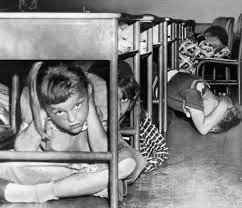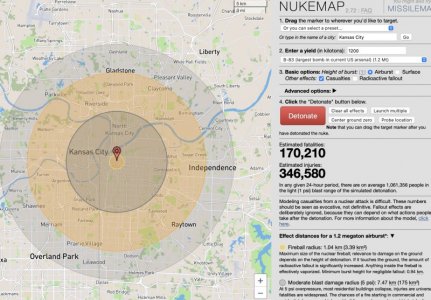I don't know how far away you can see it explode. but when the 1st atomic bomb exploded in 1945, a young blind girl who was riding in a car 20 miles away said she "saw " a flash of light.
As far as loss of power is concerned, it depends upon whether the power station(s) were hit by the electro-magnetic pulse. If L.A. was getting power from Hoover Dam (Nevada), and Hover Dam generators were knocked out, L.A. might easily have a temp brown out. Of course there could be a "domino effect" which could cripple large areas. Decades ago, a major power station in upstate N.Y. failed and because of the domino effect, NYC had a major blackout.
PS: solar flares can and do knock out power over a large region.
Radiation can travel quite far. Dust particles can absorb radiation and travel on the wind. The further the dust travels, the more settles back to earth. Thus, for example, if New York City was hit, the wind would likely spread radiation over the Atlantic Ocean , but by the time it reached Iceland, very little radiation would be left.
The best protection from radiation is to be in your basement. (Provided, the bomb did not go off very near you.) If you were not hit by the direct blast effect, your chances of survival are quite good.
If multiple cities were hit, however, the living would envy the dead. No power, no internet, lack of food and safe drinking water. hoarding and widespread violence would ensue. Gangs would roam the countryside and steal whatever you had saved up.



